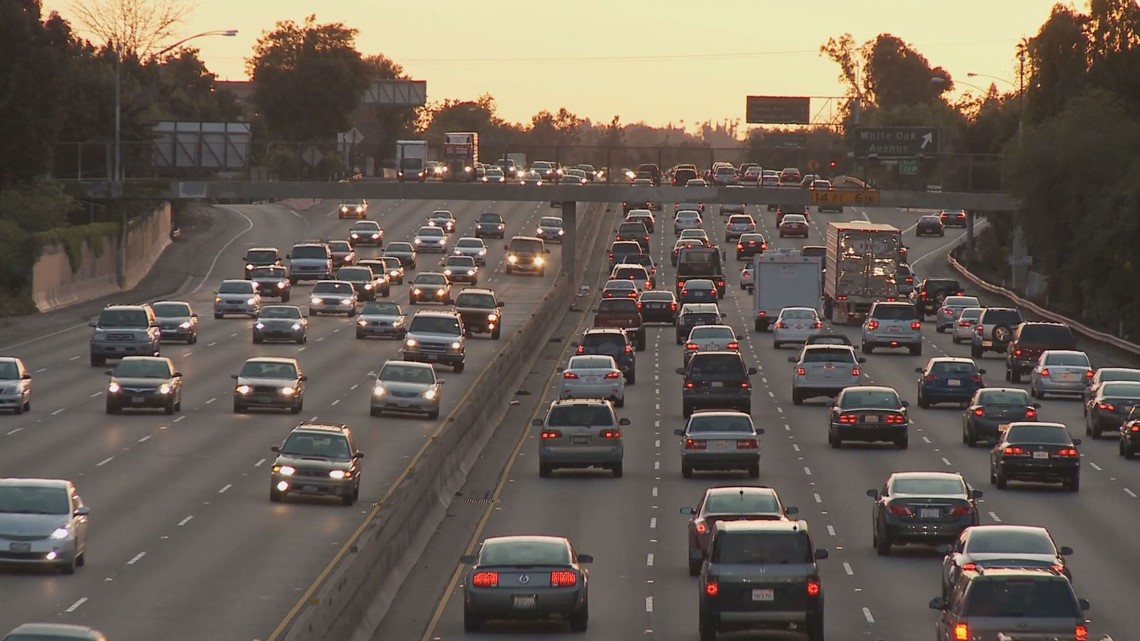Average cost of car insurance in California

Average cost of car insurance in California varies significantly depending on numerous factors. Understanding these factors is crucial for securing affordable and adequate coverage. This guide explores the key elements influencing insurance premiums, helping California drivers navigate the complexities of car insurance and make informed decisions.
From age and driving history to the type of vehicle and location, many variables contribute to the final cost. We’ll delve into the different types of coverage available, providing a clear understanding of their costs and benefits. Furthermore, we’ll examine strategies for obtaining competitive quotes and maximizing potential savings through discounts and smart choices. By the end, you’ll be better equipped to find the right car insurance policy for your needs and budget.
Table of Contents
ToggleFactors Influencing Car Insurance Costs in California
Several factors significantly impact the cost of car insurance in California. Understanding these factors can help you secure more affordable coverage. This section will explore key elements affecting your premium, allowing you to make informed decisions.
Age and Driving History
Insurance companies consider age and driving history as major factors. Younger drivers, typically under 25, generally pay higher premiums due to statistically higher accident rates. A clean driving record with no accidents or traffic violations leads to lower premiums, while accidents and tickets increase costs. The severity of accidents also plays a role; a major accident will result in a more substantial premium increase than a minor fender bender.
Car Model
The make, model, and year of your vehicle directly impact insurance costs. Luxury cars and high-performance vehicles are generally more expensive to insure due to higher repair costs and a greater risk of theft. Conversely, less expensive and safer vehicles often come with lower insurance premiums. Safety features such as anti-lock brakes and airbags also influence pricing.
Location in California
Your location within California significantly affects your insurance rates. Areas with higher crime rates, more accidents, and greater traffic congestion tend to have higher insurance premiums. Rural areas generally have lower rates compared to densely populated urban centers like Los Angeles or San Francisco.
Credit Score

Source: abc10.com
In many states, including California, your credit score can influence your car insurance premiums. Insurers often use credit scores as an indicator of risk. A higher credit score generally correlates with lower premiums, while a lower credit score can lead to higher rates. This is because individuals with good credit are statistically less likely to file claims.
Driving Record
Your driving record, encompassing accidents, tickets, and moving violations, is a crucial factor. Each incident adds to your risk profile, resulting in higher premiums. The number of incidents and their severity directly impact the increase in your rates. Maintaining a clean driving record is essential for keeping your insurance costs low.
Comparison of Insurance Costs for Different Driver Profiles
| Driver Profile | Age | Driving History | Estimated Annual Premium (USD) |
|---|---|---|---|
| Young Driver | 20 | Clean Record | $2,500 – $3,500 |
| Young Driver | 20 | 1 Accident | $3,500 – $4,500 |
| Experienced Driver | 40 | Clean Record | $1,200 – $1,800 |
| Experienced Driver | 40 | 2 Accidents | $2,000 – $3,000 |
Note: These are estimated ranges and actual premiums will vary based on numerous factors.
Types of Car Insurance Coverage and Their Costs
Understanding the different types of car insurance coverage and their associated costs is vital for making informed decisions. This section will Artikel the key coverages and their typical price ranges in California.
Liability Insurance
Liability insurance covers damages and injuries you cause to others in an accident. It typically includes bodily injury liability and property damage liability. The cost of liability insurance varies depending on the coverage limits you choose. Higher limits offer greater protection but also result in higher premiums. A common range is $500 – $1500 annually, but this can vary significantly.
Collision Insurance
Collision insurance covers damage to your vehicle caused by a collision, regardless of fault. The cost depends on the value of your car and your deductible. Higher deductibles result in lower premiums but mean you pay more out-of-pocket in the event of a claim. The average annual cost can range from $300 to $1000 or more.
Comprehensive Insurance
Comprehensive insurance covers damage to your vehicle from events other than collisions, such as theft, vandalism, fire, or hail. Like collision insurance, the cost is influenced by the vehicle’s value and your deductible. Average annual costs can range similarly to collision insurance, from $300 to $1000 or more.
Uninsured/Underinsured Motorist Coverage
This coverage protects you if you’re involved in an accident with an uninsured or underinsured driver. It helps cover your medical bills and vehicle repairs. Costs vary depending on coverage limits, with higher limits resulting in higher premiums. This is often bundled with liability coverage.
Medical Payments Coverage (Med-Pay)
Med-Pay coverage helps pay for medical expenses for you and your passengers, regardless of fault. It’s a supplemental coverage that can be helpful in reducing out-of-pocket costs after an accident. The cost is relatively low compared to other coverages.
Average Cost of Each Coverage Type
- Liability Insurance: $500 – $1500 per year
- Collision Insurance: $300 – $1000+ per year
- Comprehensive Insurance: $300 – $1000+ per year
- Uninsured/Underinsured Motorist: Varies widely based on limits
- Medical Payments Coverage: Relatively low cost, varies by coverage amount.
Note: These are average ranges and actual costs can vary considerably.
Obtaining Car Insurance Quotes in California
Shopping for car insurance can feel overwhelming, but comparing quotes from different providers is crucial for finding the best coverage at the most competitive price. This section details how to effectively obtain and compare quotes.
Comparing Insurance Quotes
Several methods exist for comparing quotes. You can use online comparison websites, contact insurance companies directly, or work with an independent insurance agent. Each method has its advantages and disadvantages, and choosing the right approach depends on your preferences and needs.
Obtaining Quotes Online
Many insurance companies offer online quote tools. These tools typically require you to provide basic information about yourself, your vehicle, and your driving history. The process is generally quick and convenient, allowing you to compare multiple quotes simultaneously.
Information Required for a Quote, Average cost of car insurance in California
To obtain an accurate quote, insurers will typically request information such as your driver’s license number, vehicle information (year, make, model), address, driving history, and desired coverage levels. Providing accurate information is crucial for receiving an accurate quote.
Factors Affecting Online Quote Accuracy
Online quotes are estimates and may not reflect the final price. Factors such as your complete driving record, credit score, and specific coverage needs might influence the final premium. It’s important to review the full policy details before accepting a quote.
Step-by-Step Guide for Obtaining and Comparing Car Insurance Quotes
- Gather necessary information (driver’s license, vehicle information, etc.).
- Use online comparison websites or visit the websites of individual insurers.
- Enter your information and request quotes.
- Compare quotes based on price, coverage, and company reputation.
- Review policy details carefully before making a decision.
Discounts and Savings on California Car Insurance
Several discounts can significantly reduce your car insurance premiums. Understanding and utilizing these discounts can lead to substantial savings. This section will detail common discounts and how to qualify for them.
Common Discounts
Many insurance companies offer various discounts, including good driver discounts, safe driver discounts, multi-car discounts (bundling), and discounts for safety features in your vehicle (anti-theft devices, airbags). Some insurers also offer discounts for completing defensive driving courses or maintaining a good credit score.
Qualifying for Discounts
Qualification criteria vary depending on the insurer and the specific discount. Good driver discounts typically require a clean driving record for a certain period. Safe driver discounts might involve installing telematics devices that monitor your driving habits. Bundling discounts require having multiple insurance policies (home, auto) with the same company.
Potential Savings
The potential savings from discounts can be substantial, often ranging from a few percentage points to over 20% of your premium, depending on the discounts you qualify for and the insurer. Bundling policies, for example, can result in significant savings.
Comparison of Discount Programs
Insurance companies differ in their discount programs and the criteria for eligibility. Comparing the discounts offered by various companies is crucial for maximizing your savings. Carefully review the terms and conditions of each discount program.
Calculating Potential Savings
To calculate potential savings, obtain quotes both with and without the discounts you qualify for. Subtract the premium with discounts from the premium without discounts to determine your potential savings.
Understanding Your Car Insurance Policy: Average Cost Of Car Insurance In California
Your car insurance policy is a legal contract outlining your coverage and responsibilities. Understanding its key terms and procedures is essential. This section provides guidance on navigating your policy.
Key Terms and Conditions

Source: oneworldplate.com
Typical policies include details on coverage limits, deductibles, exclusions, and procedures for filing claims. Familiarize yourself with these terms to understand your rights and responsibilities.
Filing a Claim
The claims process usually involves reporting the accident to your insurer, providing necessary documentation (police report, photos), and cooperating with the insurer’s investigation. Your policy will Artikel the specific steps for filing a claim.
Making Policy Changes
To make changes, such as updating your address or adding a driver, contact your insurer directly. They will guide you through the necessary steps and may require additional documentation.
Cancelling Your Policy
To cancel your policy, typically you need to provide written notice to your insurer. There might be cancellation fees depending on your policy terms and the timing of the cancellation.
Sample Policy Document Representation
A typical policy document would include sections for: Policy Information (policy number, insured’s information, vehicle information), Coverage Summary (details of liability, collision, comprehensive, etc., with limits and deductibles), Exclusions (situations not covered by the policy), Premium Information (payment schedule, amounts), Claims Procedures (steps to follow if an accident occurs), and Policy Terms and Conditions (legal details and definitions).
End of Discussion
Securing affordable and comprehensive car insurance in California requires careful consideration of various factors. By understanding the influence of your driving history, vehicle type, location, and credit score, you can proactively manage your insurance costs. Remember to compare quotes from multiple providers, explore available discounts, and carefully review your policy to ensure it adequately protects you and your vehicle.
Making informed choices empowers you to find the best balance between cost and comprehensive coverage.
Frequently Asked Questions
What is the average cost of liability-only car insurance in California?
The average cost of liability-only car insurance in California varies greatly, but it generally falls between $500 and $1500 annually. This range depends heavily on factors like driving history and location.
How often can I expect my car insurance rates to change?
Your rates can change annually, or even more frequently, depending on your insurance provider and any changes in your risk profile (e.g., moving, getting a ticket, adding a driver to your policy).
Can I get car insurance if I have a DUI on my record?
Yes, but it will likely be significantly more expensive. Insurance companies consider DUI convictions a high-risk factor and will adjust premiums accordingly. You may need to seek out specialized high-risk insurance providers.
What happens if I’m involved in an accident and don’t have enough coverage?
If your coverage limits are insufficient to cover the damages or injuries resulting from an accident, you could be held personally liable for the remaining costs. This could lead to significant financial hardship.